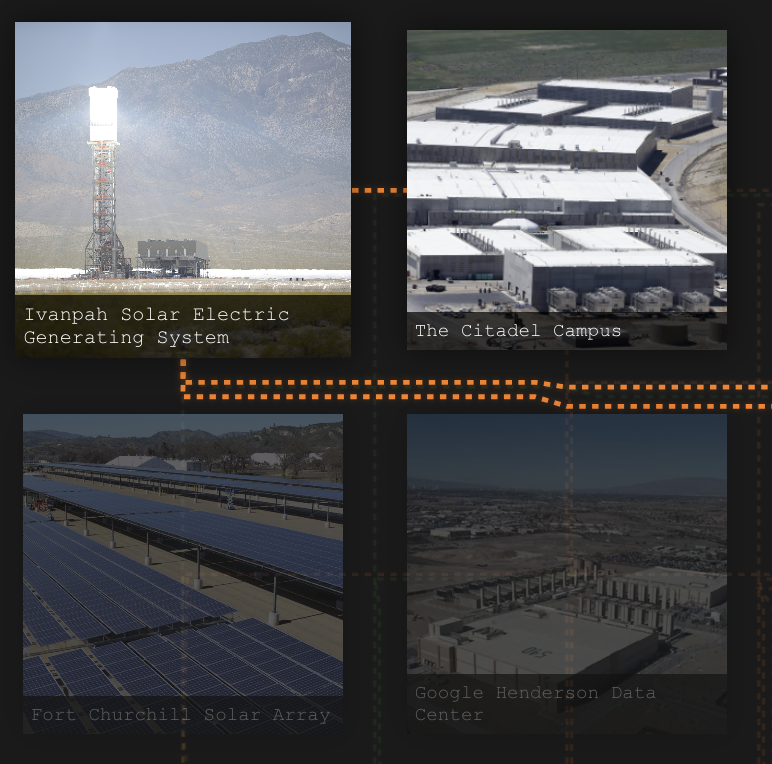it's micha.love
Nevada Technosphere Diagram
25 Dec 2024 - NYC

˚₊‧꒰ა ☆ Nevada Technosphere Diagram ☆ ໒꒱ ‧₊˚
The Nevada Technosphere Diagram draws attention to the interdependence of the technosphere and human habitability. At its center, there is a moment of enjoying a refreshing can of Coke, but as one traces the interdependencies, one can see that this simple moment is underpinned by a complex network of infrastructural nodes that extend far beyond the human scale.
Technosphere
excerpted from Planetary Realism
The Earth is encrusted with human-made artifacts we call, collectively, technology. From concrete to artificial light, visible from space at night, to communications satellites that encircle the Earth to undersea cables carrying the less visible but no less influential flow of financial information to transportation infrastructure to energy systems that metabolize fossil fuels, the technosphere is pervasive. Peter Haff, who coined the term, points out that the technosphere has become critical to the habitable environment for human civilization. He calls this the “rule of provision, that the technosphere must provide an environment for most humans conducive to their survival and function.”3 In this sense, the relationship between human civilization and the technosphere is analogous to the relationship between the biosphere and atmosphere in that they are co-constitutive. Each co-produces the other and is necessary for habitability.
For humans, the upshot of the rule of inaccessibility is to draw attention toward what we are familiar with and thus towards local cause and effect, and away from one of the principal paradigms of the Anthropocene world, namely that humans are components of a larger sphere they did not design, do not understand, do not control and from which they cannot escape.
As Haff points out, technology at a large scale is highly inaccessible. This “rule of inaccessibility” cuts both ways: large-scale technological systems are not likely to affect human activity directly, or if they do, it’s through a series of intermediary mechanisms that translate down scales. Think:
- Police officer - who is protecting infrastructure, therefore the infrastructure enacting a mechanism to protect itself
- Utility bill - an expression of a much larger system, most of which is rendered unavailable to the client
- Cell phones - that exist as nodes in a vast interconnected system and the outcome of a large manufacturing/extraction mechanisms mostly unavailable
All exist at the human-accessible scale, but are representatives of mechanisms that extend to far greater-than-human scales. As Haff points out, this leaves us humans largely in the dark about systems that we may well rely upon—whether it be financial, energy, transportation, or communications. And even in this obscurity, the interdependence is not optional. Human habitability has come to rely on large-scale technical systems just as those systems have come to rely on human provisioning—whether it be their labor, data, etc.
Planetary Realism reckons with the technosphere as having its own agency. Taken to its most extreme, are the “human exclusion zones” that operate largely without human presence—be it a lights-out warehouse or an automated greenhouse—that are able to sustain themselves with minimal human intervention. These are systems that can operate on the world and influence it without relying on human intervention, essentially the technosphere bypassing humans all together.